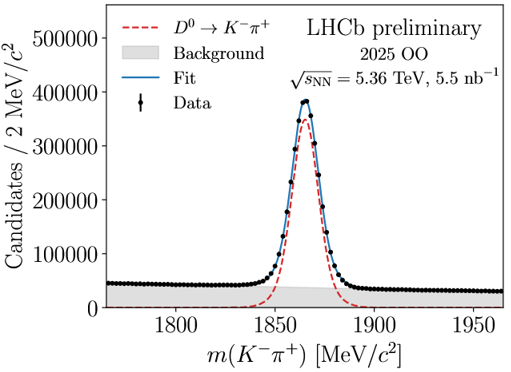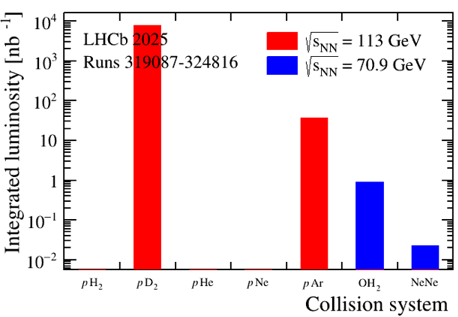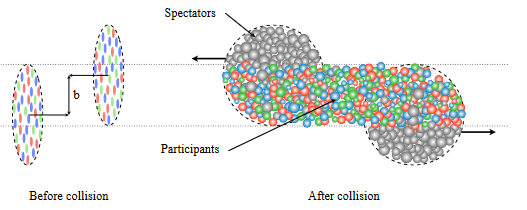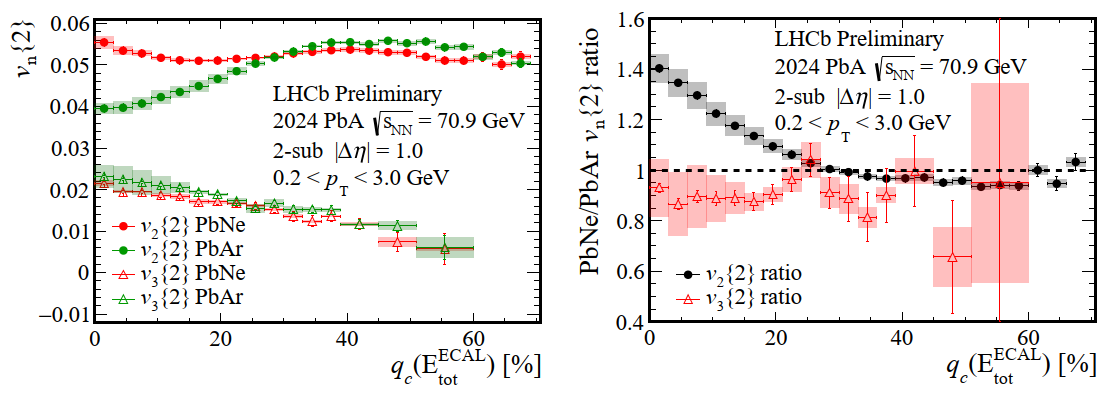LHCb explores new physics in special light-ion LHC runs

The LHC carried out a special run programme early summer. First results were reported by the ALICE, ATLAS, CMS and LHCb experiments at the Initial Stages of High-Energy Nuclear Collisions conference. These results were also presented at a CERN seminar and reported in a CERN news.
During these special runs LHCb successfully acquired proton-oxygen (pO) collisions, followed by oxygen-oxygen (OO) and neon-neon (NeNe) collisions, as well as OH2 and NeNe collisions in fixed target mode. LHCb is unique in its ability to inject gases into the LHC beam pipe using the SMOG2 system. This enables events resulting from collisions between particles from the two LHC beams circulating in opposite directions to be recorded, as well as collisions between particles from one of the beams and gas injected into the beam pipe. Collisions involving stationary gas are also known as fixed-target collisions. The images below show the reconstructed beauty and charm mass peaks measured in OO collisions.

In terms of integrated luminosity, LHCb far exeeded its targets, efficiently collecting approximately 33 nb-1 in pO, 5.5 nb-1 in OO and 0.56 nb-1 in NeNe collisions. The plots below show the luminosity collected in different configurations.

LHCb reported its measurement of the shape of the 20Ne nucleus at both the Initial Stages conference and the CERN seminar. The ground state of the 20Ne nucleus is of particular interest due to extreme deformation expected in the α+ 16O or 5-α-cluster molecular configuration.
During high-energy heavy-ion collisions, conditions of extremely high temperature and density can be achieved allowing Quark-Gluon Plasma (QGP) to form. This state of matter consists of a soup of nearly free quarks and gluons. The ions can collide head-on or peripherally, creating larger or smaller region in which QGP can form. This region is measured by a quantity called centrality, which is related to the impact parameter b, as shown in the image below.

The particles emitted from the region at which QGP could be created are described by a phenomenon known as collective flow. In such collisions, the initial geometric asymmetries of the overlapping nuclear regions, along with the subsequent pressure gradients cause the produced particles to exhibit preferred directions in their momentum distributions. The flow coefficients of interest here are the elliptic flow (v₂), which measures the elongation of the nuclear overlap region, and the triangular flow (v₃), which characterizes the triangular asymmetry of the region. The study of collective flow offers sensitive insights into the shape of nuclear initial state and the properties of the produced medium.
LHCb physicists compared PbNe and PbAr collisions in a fixed-target mode injecting gas to the LHC using SMOG 2. The Ar nucleus is expected to be almost spherical. Therefore, distributions of flow coefficients from the PbNe and PbAr collisions are compared to determine the shape of the Ne nucleus.

The images above show the distribution of the v2 and v3 flow coefficients as a function of centrality (left), alongside the ratio between PbNe and PbAr collisions (right). The flow coefficients demonstrate a distinctly different dependence on centrality in PbNe and PbAr collisions. Notably, v2 in PbNe collisions is 1.4 times larger than in PbAr for the most central collisions. This non-trivial dependence is well described by hydrodynamic models that incorporate nuclear-structure inputs. This points to a clear signature of the peculiar bowling-pin shape of the 20Ne nucleus and validates the hydrodynamic description of the hot medium formed in these collisions.
Further information can be found in the LHCb presentations at the Initial Stages conference and the CERN seminar as well as in this LHCb conference report.
